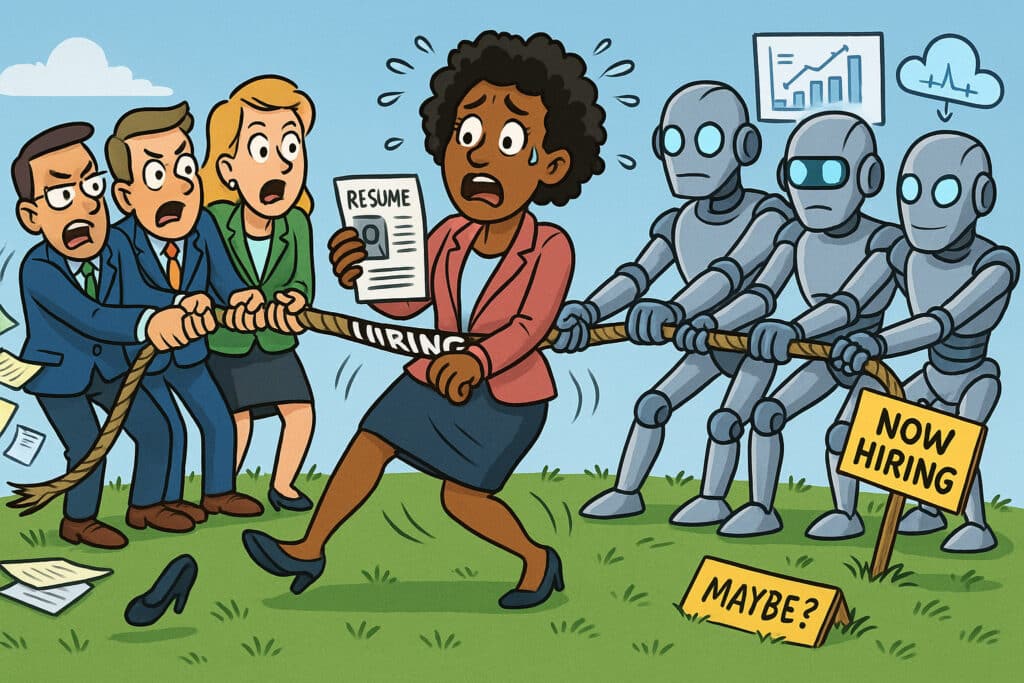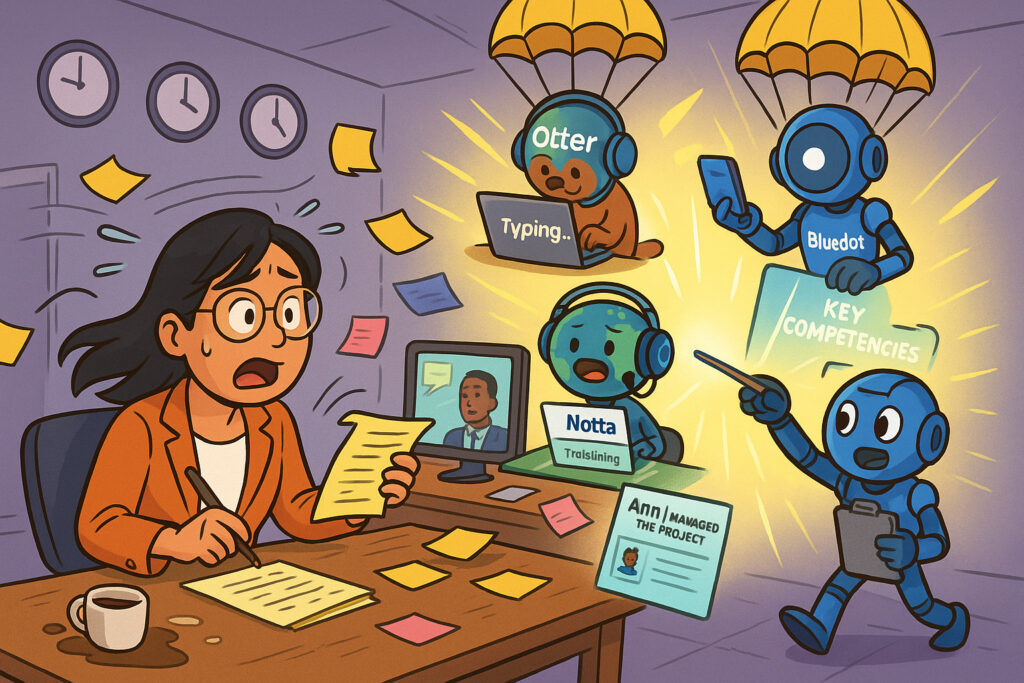Hey, it’s Kira from makethehire.com! If you’ve worked in recruiting—or, like me, spent way too many hours in the IT trenches at recruiting firms—you’ve probably noticed the growing buzz around candidates using AI to craft their resumes and cover letters. (Seriously, some of these “flawless” applications look like they’ve been through a digital car wash.) That’s exactly where AI content detection steps in, helping recruiters spot when a bot—not a human—has done most of the talking.-

So, what’s a recruiter or HR team supposed to do? Ignore it and hope for the best? Or start looking for ways to level the playing field? Turns out, artificial intelligence content detection tools are becoming crucial in hiring—and they’re not just for academics anymore. With the rise of platforms like ChatGPT, chatgpt detection is now a real consideration in recruiting workflows.
What’s Out There: Copyleaks vs. GPTZero for Artificial Intelligence Content Detection
Let’s cut through the marketing lingo and look at what these two heavy-hitters actually offer for AI content detection and chatgpt detection:
Copyleaks: Think of this as the enterprise-level watchdog for artificial intelligence content detection. It checks for both AI-generated and plagiarized text (it even has a feature called Codeleaks for catching AI-generated code—super handy for dev roles). With robust AI content detection capabilities, Copyleaks supports 30+ languages, integrates smoothly with ATS systems, and checks all the compliance boxes that legal teams love.
👉 Curious to see it in action? Test Copyleaks for free here.
GPTZero: This one’s a favorite for smaller teams or anyone just dipping their toes into chatgpt detection. It’s fast, user-friendly, and reliable at flagging AI in English-language resumes and writing samples. Plus, it offers a handy Chrome extension and a batch-upload feature—perfect for a quick post-lunch resume triage.
👉 Want to give it a spin? Try GPTZero for free here.
How Recruiters Are Actually Using Artificial Intelligence Content Detection Tools
Let’s be real: recruiters are busy. Between back-to-back calls, scheduling, and that never-ending email pile, nobody wants another tool unless it makes life easier. Here’s where these detectors fit into daily hiring workflows:
1. Sorting Through Resumes & Cover Letters
Bulk-upload everything you got overnight and let the tool flag anything “likely AI-written.” Real-life Kira tip: GPTZero’s batch feature is perfect if you’re on a budget or a small team. For high volume or lots of non-English docs, Copyleaks is worth the investment. Both will help you spot the stuff that just feels off—those resumes that sound more like a press release than a real person’s story.
2. Screening Writing Tasks (Sales Emails, Case Studies, etc.)
Just wire up your ATS so that any file a candidate uploads gets scanned automatically. Set your alerts for “too much AI,” and boom—no more sorting through AI-generated sales pitches pretending to be human.
3. Catching AI-Generated Code
This one’s close to my IT heart: Copyleaks’ Codeleaks can check coding challenges for AI-generated or plagiarized snippets. As someone who’s debugged way too many candidate assignments, trust me—this is gold.
4. Interview Prep
Ever get that nagging feeling that a candidate’s answers are a little…robotic? Paste their responses into GPTZero live and see if it sets off any alarms. Sometimes it’s just nerves, sometimes it’s a chatbot.
5. Keeping Employer Branding Human
In some industries (finance, healthcare, etc.), compliance matters. Copyleaks can make sure your company’s outbound messages are actually written by a person, not a bot—because nobody wants their job posts flagged as “too artificial” by regulators.
6. Spotting Trends and Process Analytics
Both tools offer APIs for tracking how much AI is sneaking into your talent pipeline. This means you can tweak your screening process based on real data, not gut feelings.
Quick Tips for Using AI Detectors Without Shooting Yourself in the Foot
- Automate It: Integrate with your Applicant Tracking System so uploads get checked automatically. Less hassle for recruiters, fewer steps for candidates.
- Don’t Be Trigger-Happy: Set two thresholds. For example: below 30% AI? You’re good. 30–70%? Have a recruiter take a closer look. Above 70%? Follow up, but don’t reject immediately—sometimes bullet points or corporate jargon trip the system.
- Conversation, Not Cancellation: If you get a high AI score, give candidates a chance to explain. I’ve seen legit people get flagged because they’re just really good at business-speak.
- Think Global: Copyleaks is way better for non-English submissions. If you’re hiring in multiple countries, that’s a lifesaver.
- Keep Data Safe: If compliance is a big deal at your company, Copyleaks’ security features will keep the legal folks happy.
So, Which Should You Choose?
- Small teams/startups: GPTZero gets you up and running for free, and it’s simple to use.
- Bigger teams/multinational firms: Copyleaks has more features, better compliance, and covers more languages and code.
- Hybrid: Use both! GPTZero for quick spot checks, Copyleaks for deeper dives or disputed cases.
FAQ: AI Content Detection
Why are recruiters using AI content detection tools these days?
With more candidates turning to AI to write resumes and cover letters, it’s getting tough to spot what’s genuinely human. Tools like Copyleaks and GPTZero help recruiters quickly flag applications that look suspiciously “bot-like,” so they can spend less time on generic fluff and more time on real candidates.
Do these tools actually work, or are they just another hiring fad?
Honestly, they’re becoming must-haves, especially for busy teams. Copyleaks works great for big companies or those hiring in multiple languages (it even checks coding assignments). GPTZero is awesome for smaller teams or quick spot-checks, and both are saving recruiters a ton of time.
What happens if my resume gets flagged as AI-generated?
Don’t panic! Most recruiters know the tech isn’t perfect. A high score doesn’t mean you’re automatically out—it just means someone will likely take a closer look or reach out for clarification. Best tip: be ready to talk about your experience in your own words during interviews.
Bottom Line:
AI content detection isn’t about catching cheaters—it’s about making sure you spend your time on real people, not polished bots. The tech’s not perfect (yet), but it’s already saving recruiters hours and helping teams spot the stories worth reading.
II think you could also find this interesting: Simple AI Content Detection



